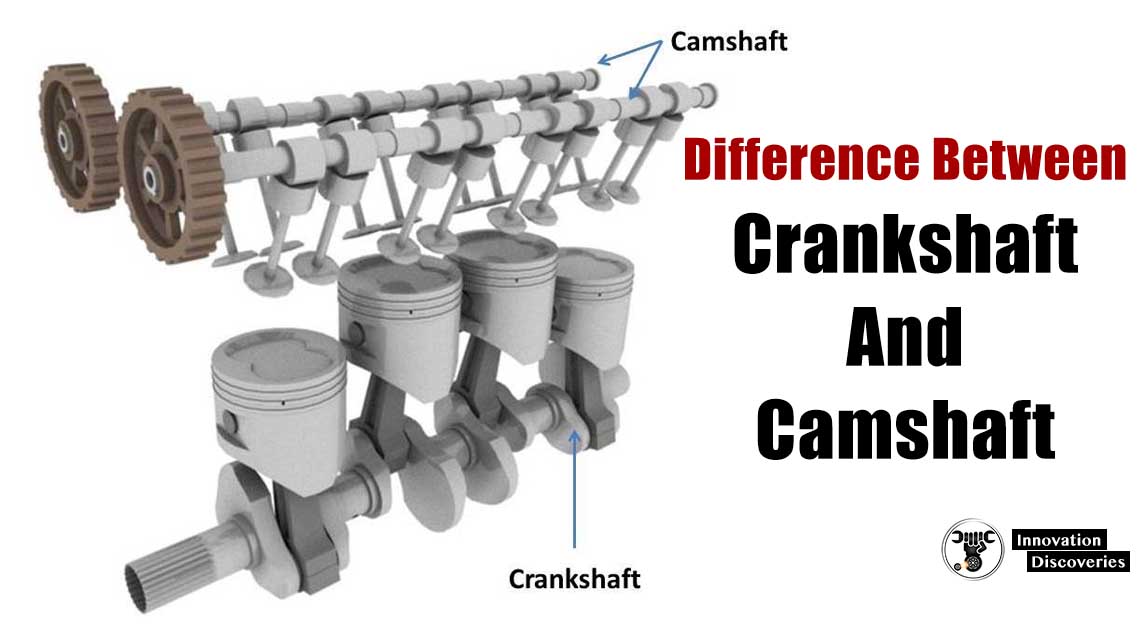
Crankshaft
The crankshaft is a vital component of an internal combustion engine. It plays a crucial role in converting the reciprocating motion of the pistons into rotational motion, which ultimately drives the engine’s output shaft. Here are some additional details about the crankshaft:
Construction:
The crankshaft is typically made of high-strength steel or cast iron due to the significant forces and stresses it must withstand. It is a precision-engineered component consisting of a central main journal and several offset crankpins. The main journal connects to the engine block, while the crankpins connect to the connecting rods that are attached to the pistons.
Counterweights:
The crankshaft is designed with counterweights strategically placed to balance the rotating assembly. These counterweights help minimize vibrations and ensure smooth operation by offsetting the weight of the pistons and connecting rods as they move up and down.
Firing Order:
The crankshaft’s crankpins are arranged in a specific firing order determined by the engine’s design. This firing order ensures the power strokes of the individual cylinders occur at the appropriate intervals for smooth engine operation and power delivery.
Harmonic Balancer:
At the front of the crankshaft, a harmonic balancer or damper is often installed. This component reduces torsional vibrations caused by the firing pulses of the engine, preventing potential damage to the crankshaft and other engine components.
Lubrication:
The crankshaft has oil passages drilled into it, allowing engine oil to be circulated and lubricate the main bearings, connecting rod bearings, and crankpin journals. Proper lubrication is essential to reduce friction, prevent excessive wear, and maintain the crankshaft’s longevity.
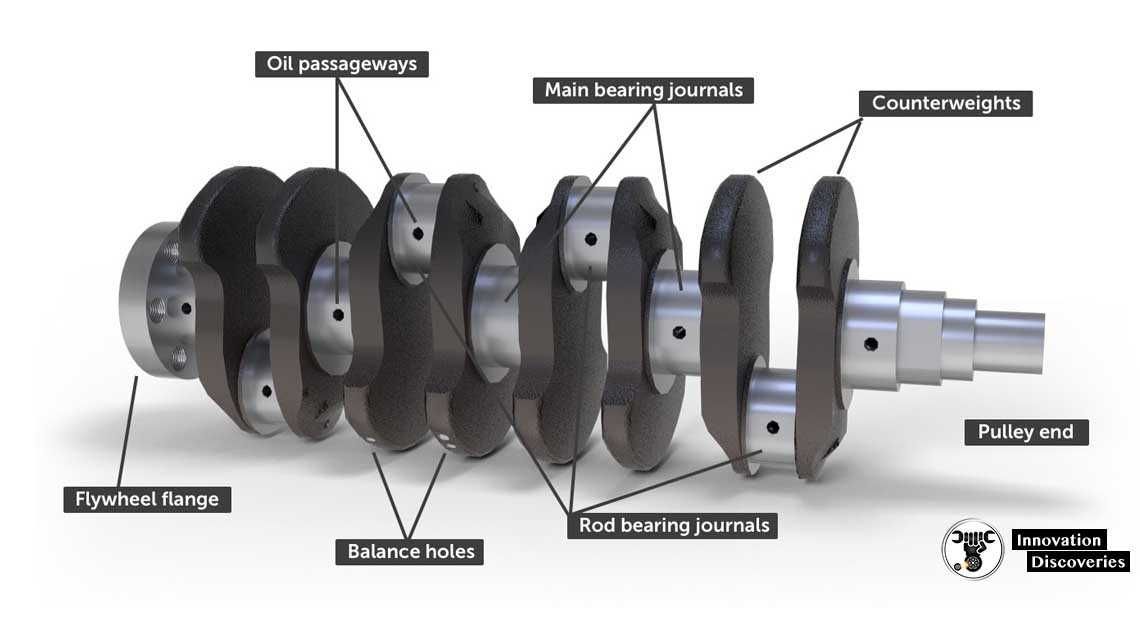
It performs the following functions:
Function:
The crankshaft converts the reciprocating motion of the pistons into rotational motion, which drives the engine’s output shaft. It transforms the up-and-down motion of the pistons into a rotary motion that can be used to power the vehicle.
Location and orientation:
The crankshaft is located at the bottom of the engine block, positioned horizontally. It connects to the pistons via connecting rods and is driven by the engine’s pistons through the connecting rod’s motion.
Shape and construction:
The crankshaft has a cylindrical shape with several offset crankpins. These crankpins are positioned at specific angles to create the engine’s firing order and enable the smooth rotation of the crankshaft.
Rotational speed:
The crankshaft rotates at high speeds, typically several thousand revolutions per minute (RPM), as it transfers power from the pistons to the output shaft.
Camshaft
The camshaft is responsible for controlling the opening and closing of the engine valves, allowing the precise intake of air-fuel mixture and the expulsion of exhaust gases. Here are some further details about the camshaft:
Construction:
The camshaft is a cylindrical shaft usually made of cast iron or steel. It runs the length of the engine block or cylinder head and is supported by bearings. Along its length, the camshaft has several lobes or cams that are designed to actuate the engine valves.
Valve Actuation:
The lobes or cams on the camshaft are strategically positioned to operate the engine valves at precise intervals. As the camshaft rotates, the lobes push against the valve lifters, pushrods, or cam followers, which, in turn, open and close the valves.
Timing Mechanism:
The camshaft is synchronized with the crankshaft through a timing belt or chain. This ensures that the camshaft rotates at the correct speed relative to the crankshaft’s rotation, maintaining proper valve timing throughout the engine’s operation.
Camshaft Types:
Depending on the engine design, there can be various camshaft configurations, such as overhead camshaft (OHC) and overhead valve (OHV). In an OHC design, the camshaft is located above the cylinder head and directly actuates the valves. In an OHV design, the camshaft is positioned within the engine block, and the valves are actuated through pushrods and rocker arms.
Variable Valve Timing:
Some modern engines feature variable valve timing (VVT) systems, where the camshaft’s timing can be adjusted to optimize engine performance and efficiency at different operating conditions. This allows for better control over valve timing and improves power output, fuel economy, and emissions.
The crankshaft and camshaft work together to ensure the smooth and efficient operation of an internal combustion engine. While the crankshaft converts the up-and-down motion of the pistons into rotational motion, the camshaft controls the precise opening and closing of the engine valves, regulating the intake and exhaust
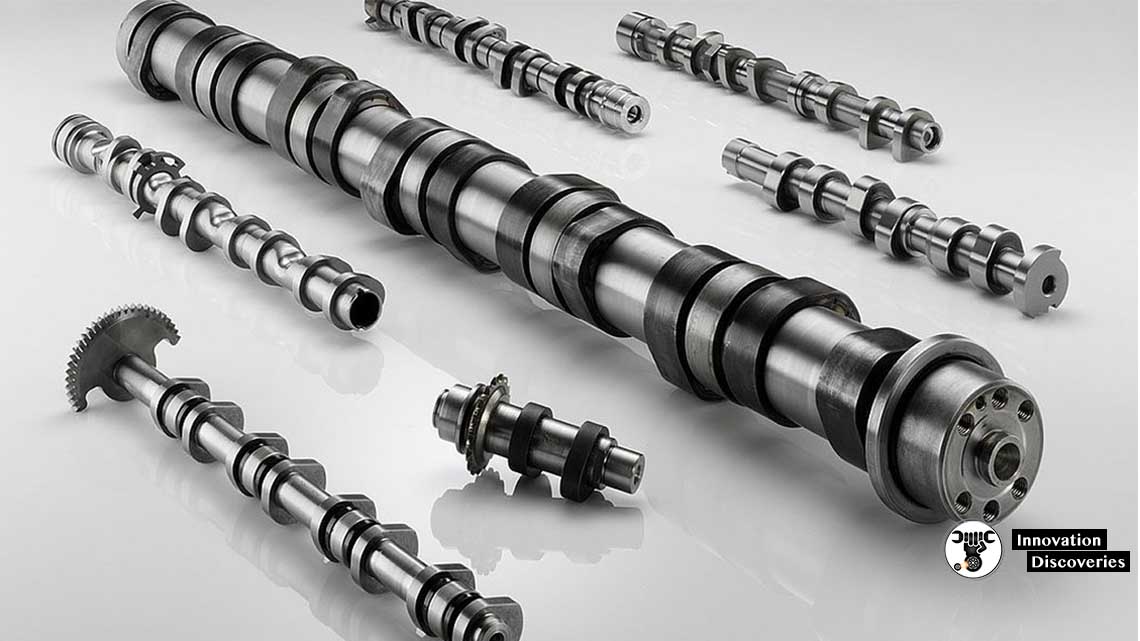
It serves the following purposes:
Function:
The camshaft controls the opening and closing of the engine’s valves. It contains lobes or cams that actuate the valves at precise intervals, allowing air-fuel mixture intake and exhaust gases expulsion in synchronization with the engine’s operation.
Location and orientation:
The camshaft is typically positioned in the engine block or the cylinder head. It runs parallel to the crankshaft and is usually driven by the crankshaft using a timing belt or chain.
Shape and construction:
The camshaft is a long, cylindrical shaft with various lobes or cams along its length. The lobes are designed with specific profiles to actuate the engine valves at the appropriate time.
Rotational speed:
The camshaft rotates at half the speed of the crankshaft, as it operates at the same speed as the engine’s crankshaft but has half the number of rotations per cycle. This is due to the four-stroke combustion cycle, where the camshaft rotates once for every two crankshaft rotations.
In summary, the crankshaft converts reciprocating motion into rotational motion, transferring power from the pistons to the output shaft. The camshaft, on the other hand, controls the timing and duration of the engine valves’ opening and closing, enabling the proper intake and exhaust of gases during the combustion process.
Difference between Camshaft and Crankshaft
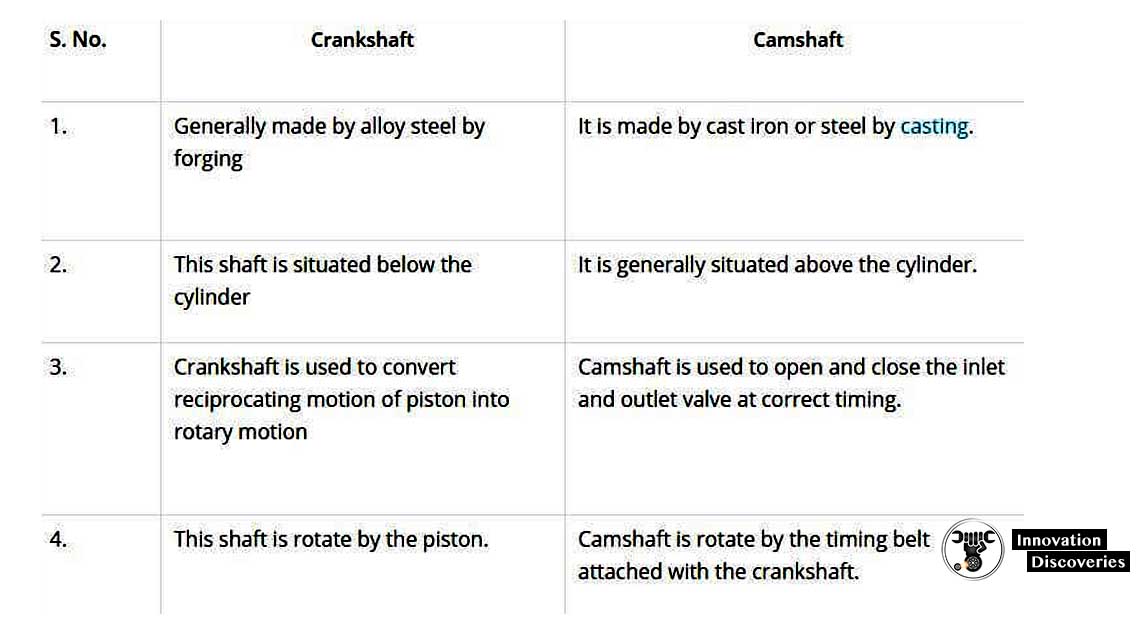


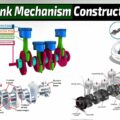

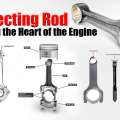
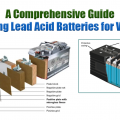
17 Comments